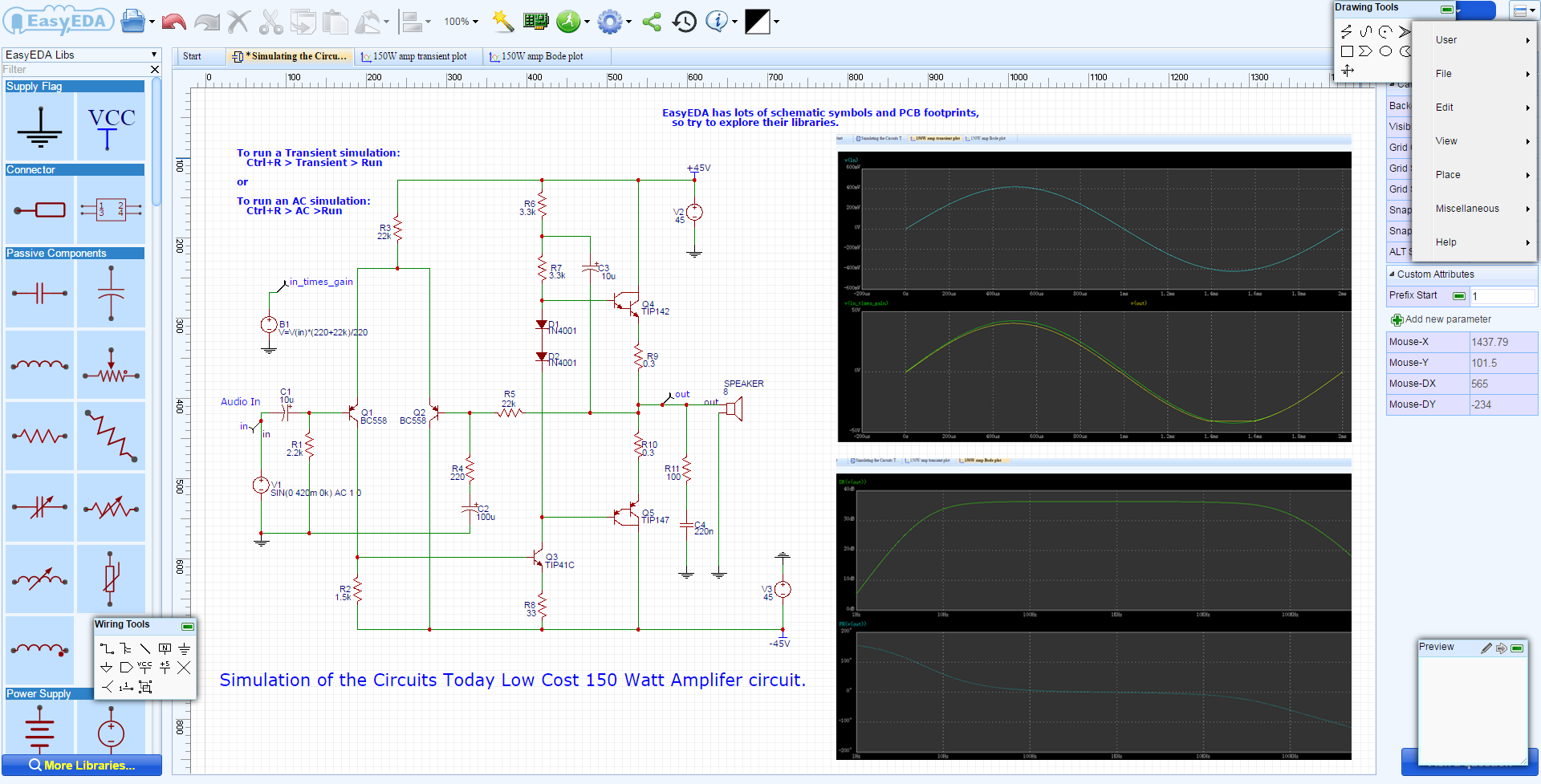
- #LTSPICE FOR MAC MAC OS X#
- #LTSPICE FOR MAC INSTALL#
- #LTSPICE FOR MAC UPDATE#
- #LTSPICE FOR MAC SOFTWARE#
- #LTSPICE FOR MAC SIMULATOR#
Including FSM based design, and wrote a couple of books to. I have worked as a Electrical/Electronic Engineer most of my life (over 50 years) and covered a fair few things over that time (Analoge/Digital/ verilogHDL/VHDL/Programming in Assembly/C/C++/occam). Example: for a 1000 ohm resistor, you can enter 1000 or. Make use of metric prefixes (listed below) to specify value. Example: for a 10 ohm resistor, enter 10 for the value, not 10 ohm. Would be interested in anyone who has seen this problem and has a workaround. When specifying the values of components, a few tips: You specify the value for the part, not the units.
#LTSPICE FOR MAC UPDATE#
Still it would be nice to see if the MAC version can be got to work.įinally, I think their might be an LTSpice update on the 1V version but have not come across it yet?
#LTSPICE FOR MAC INSTALL#
I still do not have a PC but sometime soon will try to install Parallels on my MACs then try to get Windows 10 installed and try the Windows version. So I wonder if you have tried this version on your own MAC computer and have any idea what the problem is? Or perhaps someone else has?

#LTSPICE FOR MAC SOFTWARE#
#LTSPICE FOR MAC SIMULATOR#
To get at the simulator and editing commands you need to use mouse right click and access commands from there. You need to use mouse right click to get at most commands and does not support much in the way of top of the screen drop down menu items (File Edit and a couple of other items but simulate is not up there now. I can install it onto both my MAC 15 Deskpro (2010 version) and the MAC Air (2012 version) and it works OK with programs that others have written in terms of developing circuits and simulating them on the MAC computers. The 2016 version does not use or need the WINE system as it is written to work directly on the intel PC MAC. As an example, Mesh current and Node voltage methods were used in a simple circuit.I have been trying to install and use LTspice 1V on my MAC computers. op spice statement and how it can calculate dc voltages and currents in a give circuit topology. To sum up, the point of this post was to illustrate. Reading the node voltage in LTspice is exactly the same as node voltage calculation by hand given reference node is the same in both cases. Here is the simple node voltage analysis of the same circuit. Here is LTspice example for the above hand analysis.

This is because LTspice takes the current direction into the voltage source. For example, current going through 10V source is same as mesh current I1 except polarity is reversed.

Create a local directory called ECE 412 in a.
#LTSPICE FOR MAC MAC OS X#
op analysis, one has to make sure to get the branch current that is isolated and matches with its mesh current counterpart. This version of LTspice will work natively under Mac OS X 10.7+. It perform a dc operating point analysis and calculate all the node voltages and branch currents in a given circuit.įollowing simple circuit is used to illustrate the mesh current analysis by hand: Mesh current and Node voltage examples here are purely for academic purpose. Although LTspice calculate voltages and currents by using sophisticated network theory, but nonetheless, it can be useful to match the node voltages and mesh currents with hand calculation as required to do so in a first year elementary circuit courses. Node voltage and Mesh current are methods that systematically calculate voltages and currents in a circuit.


 0 kommentar(er)
0 kommentar(er)
